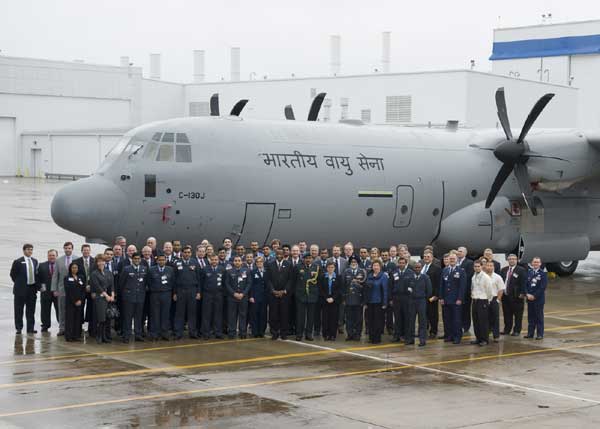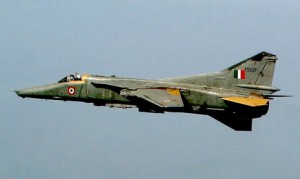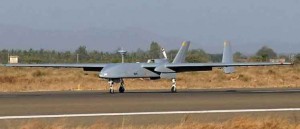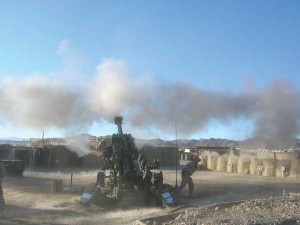Tank acquisition has been the Indian Army’s metaphorical equivalent of the MiG relationship. Beginning in the wake of the Indo-Pakistan 1965 embargo, India began acquiring the T-54 tank with the 100mm main gun. The relationship morphed through the T-55, the various marks of the T-72 and, most recently the T-90, Russia’s most up-to-date armoured combatant. Each, save the original T-54, has been assembled and later manufactured under licence in Indian ordnance factories. Though the Indian Ministry of Defence (MoD) has tried to enter the tank business with an indigenous design, first the Vijayanta, an adaptation of a British design the UK never adopted, and more recently, the Arjun, these efforts have either been less capable or more expensive than their Russian counterparts. To the extent that ground warfare continues to constitute a niche in the Indian land battle plan, the T-90 remains the armoured workhorse.
Russia remains India’s principal foreign defence supplier…
It should be noted that low prices and favorable financial terms are no longer features of Russian military supply to India or for that matter, to anyone else! Russian military sales are now a commercial business in every sense of the word, handled largely by Rosoboronexport, a parastatal company. Following the break-up of the Soviet Union, Moscow began requiring cash on the barrelhead in convertible currencies. As the Red Army has contracted and reduced its new equipment acquisitions, prices charged to foreign customers have risen exponentially, making this materiel far less attractive. At the same time, lower Russian internal demand and greatly diminished Kremlin subsidies for development have significantly reduced the sophistication of Russian military hardware. It is useful to note that the MiG-35, Russia’s entry in the MMRCA sweepstakes, could not offer a viable Active Electronically Scanned Array (AESA) radar that was a specific requirement of the RFP.
Notwithstanding all of the foregoing shortcomings, the fact that India has in place an in-depth-and-breadth Russian logistical support system continues to constitute a significant advantage to Moscow in Indian decisions on procurements. Thirty years of exposure to and experience with Russian equipment tends to favour continued import from this supplier.
The greatest advantage to the GOI in procurements from Russia is the very limited restrictions that Moscow imposes on weapons transactions. By and large, Rosoboronexport approaches military sales essentially as just another international sale. What is more, technology transfer is routinely included where requested with a price tag to match. Good in this case, is the enemy of best. Although the Indian armed forces generally recognise that American hardware is better designed, of higher quality and sold on more transparent terms, USG restrictions tend to make “good” good enough.
Low prices and favorable financial terms are no longer features of Russian military supply to India.
Israel has taken second place as the preferred military supplier to India. Here again, minimum restrictions on employment, reasonably speedy response and a willingness to transfer or share technology have been the main attractions when added to Indian recognition that Israeli technology is of a high order. The old adage that the “enemy of my enemy is my friend” seems also to be a part of the equation. Unlike many of the other capable suppliers including the US and Russia, India has always been reasonably assured that Israel would not sell to Pakistan.
Another advantage to India has been the mercantilist proclivities of the Israeli government. Jerusalem has characteristically been out front in motivating and guaranteeing sales by Israeli companies, even when the suppliers were in the private sector. High level Israeli delegations visiting India have not been shy in pressing the cause of international sales, fully recognising that economies of scale in military sales were an essential ingredient in support of affordability to the Israeli defence exchequer. Israel has been willing, even eager to second its best engineers to the Indian defence industry, including design engineers to work with the DRDO and to set-up shop in India to transfer technology, assemble and manufacture Israeli hardware.
Since the millennium, Israeli sales to India moved into high gear with the value to date approaching $10 billion. The GOI has acquired 14 Barak-1 anti-ship missile systems for the Indian Navy and a broad range of sophisticated naval sensors. Israel bid and won major contracts to modernise and upgrade the IAF MiG fleet where Russian technology was no longer judged competitive and which the USG had placed off-limits to American contractors.
The GOI quite early recognised Israeli superiority in the field of Unmanned Aerial Vehicles, an area wherein the Indian industry seems to have lagged behind. Both the IAF and the Indian Navy are currently operating versions of the Israeli Heron which has also sold well in Europe and which fills a niche, medium altitude and long endurance, below that controlled by the MTCR and in which the US is either unwilling or unable to compete.
Israel has taken second place as the preferred military supplier to India.
The centerpiece of the Indo-Israeli defence supply continuum currently is the Phalcon airborne early warning radar system. Israel has contracted for three Phalcons in an initial tranche of which at least two have already been delivered to the IAF. More appear to be in the Indian long-term acquisition plan. The original Israeli sales plan for the Phalcon which the Israeli Air Force is not acquiring, was to sell the system to China. Sufficient American hardware and financial support put the USG in position to nix the sale but the Bush administration perhaps out of embarrassment for “overlooking” the Israeli sales plan for an extended period, awarded Jerusalem a consolation prize by allowing the sale to India.
Israel has also sold the Green Pine anti-ballistic missile radar system to India. This created another bone of contention with the USG since it is the heart of the Arrow ABM system which though largely Israeli technology, was substantially financed by the USG. The GOI has indicated substantial interest in the full-up Arrow system but the USG has not to date assented to the sale. Other Israeli materiel acquired by India to date includes laser-guided bombs, aerostat mounted surveillance radars and a variety of electronic counter-measures and other air battle support hardware and software.
French success as a military supplier to India has depended heavily on the merchandising proclivities of a succession of French state heads.
The UK was India’s earliest supplier, leaving behind much of the hardware that remained on the Indian side after Partition. Both of India’s aircraft carriers to date have been decommissioned Royal Navy ships. The INS Viraat, currently the only Indian Navy carrier in commission, was the old HMS Hermes. All the assigned aircraft are of British origin, including the AV-8B Harrier jump jets and the Westland Sea King helicopters. The latter is actually the British-built version of the Sikorsky Sea King.
The Leander-class frigate, the Jaguar attack fighter and the Vijayanta tank, were of British design, though ultimately manufactured under licence in India. More recently, the UK won the contract for the IAF’s Advanced Jet Trainer, the BAe Hawk 132. Initial deliveries of this aircraft were off a rejuvenated British production line which had to be restarted to service the contract with ensuing aircraft assembled from kits at HAL.
Still pending is procurement of the BAe M577 155mm lightweight Howitzer. Though of British design, the first M577s, if eventually acquired, will be made in USA at the wholly owned facilities of BAe. The weapon is to become a standard fit with the USMC as well.
Unlike Russia, Israel and France, the UK places greater constraints on its weapons transfers. However, since India remains a member of the Commonwealth, it tends to receive preferential treatment that would not be accorded in procurements from the US. And given the logistical origins of the Indian armed forces, supply chains to the UK remain in place.
France continues to be a significant supplier to India. The relationship focuses primarily on aircraft and goes all the way back to provision of the Alize ASW aircraft that was integral to the original fit-out of India’s first aircraft carrier, the INS Vikrant. Since then, the IAF has acquired the Sepecat Jaguar, originally a British-French collaboration, still being manufactured almost in its totality by the HAL.









Col Gross provides a refreshing view of what is needed to get India into the big league of weapons systems production. He is candid in his assessment of India’s weakness in taking on design and development of complicated military hardware. Is that because of weak management capabilities or lack of advance technological skills. My guess is former, since India has proven time and again of being able to handle successfully space and nuclear projects which require advance technology wherewithal. To overcome the production management weakness, India needs to learn from the masters, namely, US and European private sectors engaged in high tech defense products. Joint co-production with such partners which include the Design and Development phase will accelerate learning and will be the most efficient use of the nation’s resources.
The author forgot to mention the most complicated and often difficult US military hardware export rules and regulations. These put off any buyer.
Also please do mention the sanctions US places on even non lethal items. Indian LCA model which was undergoing wind testing in US was impounded and held up for two years.
US is unable to sanction China which openly steals secret military hardware without paying a penny. US rather stays mute to that. All rules apply to money paying customers.
Perhaps the most successful Indian suppliers have been the public sector shipyards that now are producing the bulk of the surface combatants and support ships for the Indian Navy and the Indian Coast Guard.